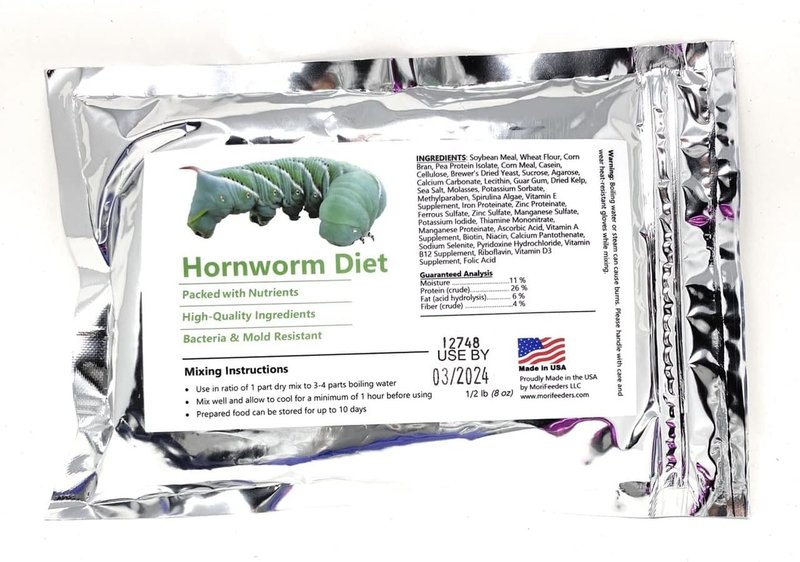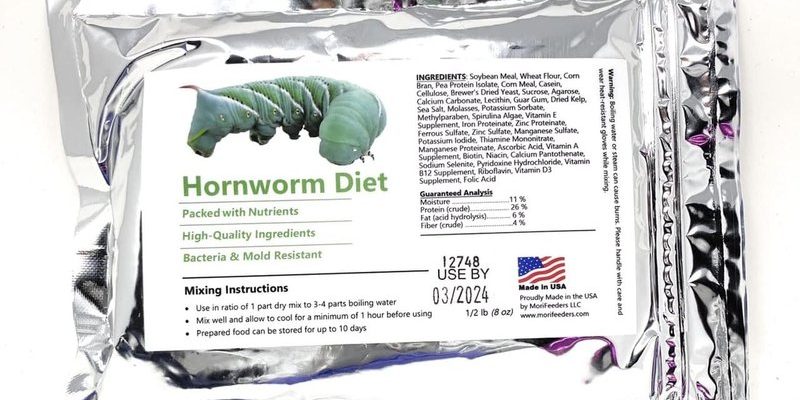
So, what exactly does a synthetic diet for hornworms look like? It’s a mix designed to mimic their natural food, packed with nutrients they need to grow and thrive. Brands like the popular “Hornworm Diet” create these formulations specifically for cultivating hornworms, especially for those who raise them as food for pets or for educational purposes. But should you take the plunge into synthetic feeding? Let’s dig into the details.
Understanding Hornworm Nutrition
Hornworms, specifically the *Manduca sexta* species, are known for their voracious appetites and rapid growth. In the wild, they primarily feed on the leaves of tomato and tobacco plants. But why is their diet so important?
Balanced Nutrition: Just like humans, hornworms need a good balance of proteins, fats, vitamins, and minerals. Their natural diet gives them just that. However, synthetic diets aim to replicate these components. By understanding what makes their natural food so nutritious, we can appreciate how a well-formulated synthetic diet can meet those same needs.
Growth and Development: High-quality nutrition is crucial for their growth and transformation into moths. It affects everything from how quickly they grow to their health during the pupation stage. Feeding hornworms with a synthetic diet can sometimes speed up growth, making it an appealing option for breeders.
Digestive System: Hornworms have a specialized digestive system that breaks down plant materials. Synthetic diets are designed to be easily digestible, which can sometimes be a challenge with fresh leaves, especially if they’re not at peak freshness.
What Is a Synthetic Diet Made Of?
You might be wondering what goes into that formula that makes up a synthetic diet. Let’s break it down.
Key Ingredients: Most synthetic diets for hornworms include several essential components. These often consist of proteins (like soy or wheat), carbohydrates, vitamins, and minerals. Some might even have artificial flavors or colors to attract the hornworms.
Formulation: Different brands have their own unique formulations. For instance, a popular hornworm diet may come in a powder that you mix with water to create a gelatinous food source. This form can make it easier for hornworms to eat, resembling the texture of soft leaves.
Mixing and Preparation: Preparing a synthetic diet is quite straightforward. Typically, you just mix the recommended amount of powder with water, heat it if necessary, and let it set before feeding it to the hornworms. It’s like cooking a meal—just a bit less messy!
Benefits of Feeding Hornworms Synthetic Diets
So, why consider switching to a synthetic diet for your hornworms? Here are some notable advantages.
Convenience: Synthetic diets offer an easy feeding solution. You can prepare larger batches, ensuring you always have food ready when you need it. This can be a game-changer, especially for those busy days when harvesting fresh leaves isn’t an option.
Consistency: When you regularly feed hornworms with a synthetic diet, you provide consistent nutrition without worrying about the variability of fresh plants. This can lead to more uniform growth and a healthier batch of hornworms overall.
Availability: Depending on where you live, getting fresh leaves might not always be feasible. Synthetic diets are often available online or at local pet stores, making them a reliable source of food for those raising hornworms.
Potential Downsides of Synthetic Diets
While synthetic diets have their perks, it’s also important to consider the potential downsides.
Natural Preference: Hornworms, as creatures of habit, might show a clear preference for fresh leaves over synthetic options. Some hornworms may refuse to eat synthetic diets entirely or not thrive as well on them.
Cost: High-quality synthetic diets can sometimes be more expensive than simply growing your own plants. If you have ample access to fresh food, cost could be a consideration.
Missing Micronutrients: Even the best synthetic diets might not replicate every micronutrient found in fresh plants. This can result in nutritional gaps. Breeders might need to add supplements to ensure a balanced diet, which can complicate the feeding regimen.
How to Transition Hornworms to Synthetic Diets
Thinking of switching your hornworms to a synthetic diet? Here are some steps to make the transition smooth and successful.
Start Slowly: Initially, you might want to introduce the synthetic diet alongside their regular food. This helps them adjust while ensuring they continue to get necessary nutrients.
Observe Their Behavior: Keep a close eye on your hornworms as you introduce the new food. Make note of how readily they accept it and their overall health. If they seem disinterested or start to exhibit unhealthy signs, it might be a sign to revert to fresh food.
Adjust Accordingly: If you find they’re not responding well, consider altering the mixture’s consistency or temperature. You can also try a different brand or formula, as some hornworms might prefer one synthetic diet over another.
Comparing Synthetic Diets and Fresh Leaves
So, how do synthetic diets stack up against fresh leaves? Let’s take a closer look.
Nutrition Comparison: Fresh leaves generally provide a broader spectrum of nutrients because they’re unprocessed. However, synthetic diets can be engineered to include specific ratios of proteins and minerals that ensure hornworms get what they need for growth.
User Experience: Fresh leaves require more effort—finding, harvesting, and cleaning—while synthetic diets are quick and straightforward to prepare. If time is limited, synthetic diets can be more convenient.
Cost Efficiency: While fresh leaves might be cheaper if you’re growing them yourself, synthetic diets can save time and effort. For dedicated breeders who have many hornworms, a synthetic diet can be an investment in efficiency.
Final Thoughts on Feeding Hornworms Synthetic Diets
Feeding hornworms synthetic diets presents a fascinating opportunity for anyone involved in raising these interesting creatures. On one hand, synthetic diets are convenient, consistent, and widely available. On the other hand, they might not fully match the nutrition and preference offered by fresh leaves.
Ultimately, the choice between synthetic diets and natural leaves comes down to your specific situation—considering factors such as availability, the number of hornworms you have, and how much time you have to invest in feeding them. If you decide to dive into synthetic diets, just remember to balance the pros and cons while monitoring your hornworms closely. Happy feeding!

